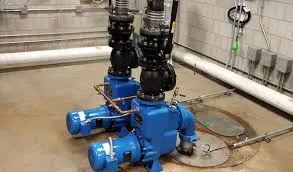Uighur
- Afrikaans
- Albanian
- Amharic
- Arabic
- Armenian
- Azerbaijani
- Basque
- Belarusian
- Bengali
- Bosnian
- Bulgarian
- Catalan
- Cebuano
- Corsican
- Croatian
- Czech
- Danish
- Dutch
- English
- Esperanto
- Estonian
- Finnish
- French
- Frisian
- Galician
- Georgian
- German
- Greek
- Gujarati
- Haitian Creole
- hausa
- hawaiian
- Hebrew
- Hindi
- Miao
- Hungarian
- Icelandic
- igbo
- Indonesian
- irish
- Italian
- Japanese
- Javanese
- Kannada
- kazakh
- Khmer
- Rwandese
- Korean
- Kurdish
- Kyrgyz
- Lao
- Latin
- Latvian
- Lithuanian
- Luxembourgish
- Macedonian
- Malgashi
- Malay
- Malayalam
- Maltese
- Maori
- Marathi
- Mongolian
- Myanmar
- Nepali
- Norwegian
- Norwegian
- Occitan
- Pashto
- Persian
- Polish
- Portuguese
- Punjabi
- Romanian
- Russian
- Samoan
- Scottish Gaelic
- Serbian
- Sesotho
- Shona
- Sindhi
- Sinhala
- Slovak
- Slovenian
- Somali
- Spanish
- Sundanese
- Swahili
- Swedish
- Tagalog
- Tajik
- Tamil
- Tatar
- Telugu
- Thai
- Turkish
- Turkmen
- Ukrainian
- Urdu
- Uighur
- Uzbek
- Vietnamese
- Welsh
- Bantu
- Yiddish
- Yoruba
- Zulu
Telephone: +86 13120555503
Email: frank@cypump.com
ئۆكتەبىر . 31, 2024 21:40 Back to list
Slurry Pump Liners for Enhanced Performance and Durability in Heavy-Duty Applications
Understanding Slurry Pump Cover Plate Liners Key Components for Efficient Operation
Slurry pumps play a crucial role in various industries, particularly those involving the transportation of abrasive and viscous materials. One essential component of a slurry pump is the cover plate liner, which significantly contributes to the efficiency and longevity of the pump. This article delves into the importance, materials, and maintenance of slurry pump cover plate liners.
Importance of Cover Plate Liners
The cover plate liner serves as the protective barrier between the pump's casing and the abrasive slurry being pumped. Its primary function is to shield the internal components from wear and tear caused by the highly abrasive nature of slurries, which typically consist of a mixture of solids and liquids. Without a robust cover plate liner, the pump would suffer from accelerated deterioration, leading to frequent breakdowns and costly downtime.
Additionally, the liner aids in maintaining the pump's hydraulic performance. By ensuring a close fit with the pump's casing, the liner helps reduce turbulence and energy losses within the pump, thereby optimizing the transfer of slurry. This aspect is particularly vital in maintaining efficiency, as even minor inefficiencies can lead to significantly higher operational costs over time.
Materials Used
The choice of material for the cover plate liner is critical, as it must possess high abrasion resistance and durability. Common materials include
1. Rubber Rubber liners are often utilized due to their excellent elasticity and ability to absorb shocks. They are particularly effective in applications where moderate abrasiveness is expected.
slurry pump cover plate liner

2. Metal Hard metal liners, often made from chrome alloy or other hard metals, are preferred in environments with highly abrasive slurries. These materials offer superior wear resistance and longevity, making them suitable for heavy-duty applications.
3. Polyurethane This material offers a good balance between flexibility and resistance to abrasion. Polyurethane liners are often used for slurries containing fine particles, providing adequate protection while minimizing wear.
4. Ceramic In cases where extreme abrasion is prevalent, ceramic liners may be employed. Although more expensive, they offer the highest level of wear resistance under harsh conditions.
Maintenance Considerations
Regular maintenance of the cover plate liner is essential to ensure the longevity and efficiency of the slurry pump. Operators should regularly inspect the liner for signs of wear, cracks, or other damage. Implementing a routine maintenance schedule can prevent catastrophic failures and extend the lifespan of the pump.
When wear reaches critical levels, timely replacement of the cover plate liner is necessary. The decision to replace the liner should be based on the specific operating conditions and the materials being pumped. It is often advisable to consult with the manufacturer or a specialist to determine the best liner material and replacement schedule for a specific application.
Conclusion
In the realm of slurry pumping, the cover plate liner plays an indispensable role in ensuring operational efficiency and equipment longevity. Understanding its importance, material options, and maintenance requirements can help operators make informed decisions, ultimately leading to reduced downtime and lower operational costs. By prioritizing the integrity of the cover plate liner, industries can enhance their productivity and reliability in handling abrasive slurry materials.
-
Custom Drilling Mud and Slurry Pump Supplier - High Efficiency, Tailored Solutions
NewsJun.10,2025
-
Supply Vertical Submersible Sewage Pump High-Efficiency WQ/QW Pumps Supplier
NewsJun.10,2025
-
Premium Sewage Ejection System & Pumps Efficient Waste Removal
NewsJun.09,2025
-
Premium Wholesale Slurry Pump Impellers Durable & Efficient Slurry Handling
NewsJun.09,2025
-
Top Sewage Pump Companies Durable Industrial Solutions for Efficiency
NewsJun.09,2025
-
Heavy Duty Slurry Pumps - OEM High Performance & Bulk Wholesale
NewsJun.09,2025










